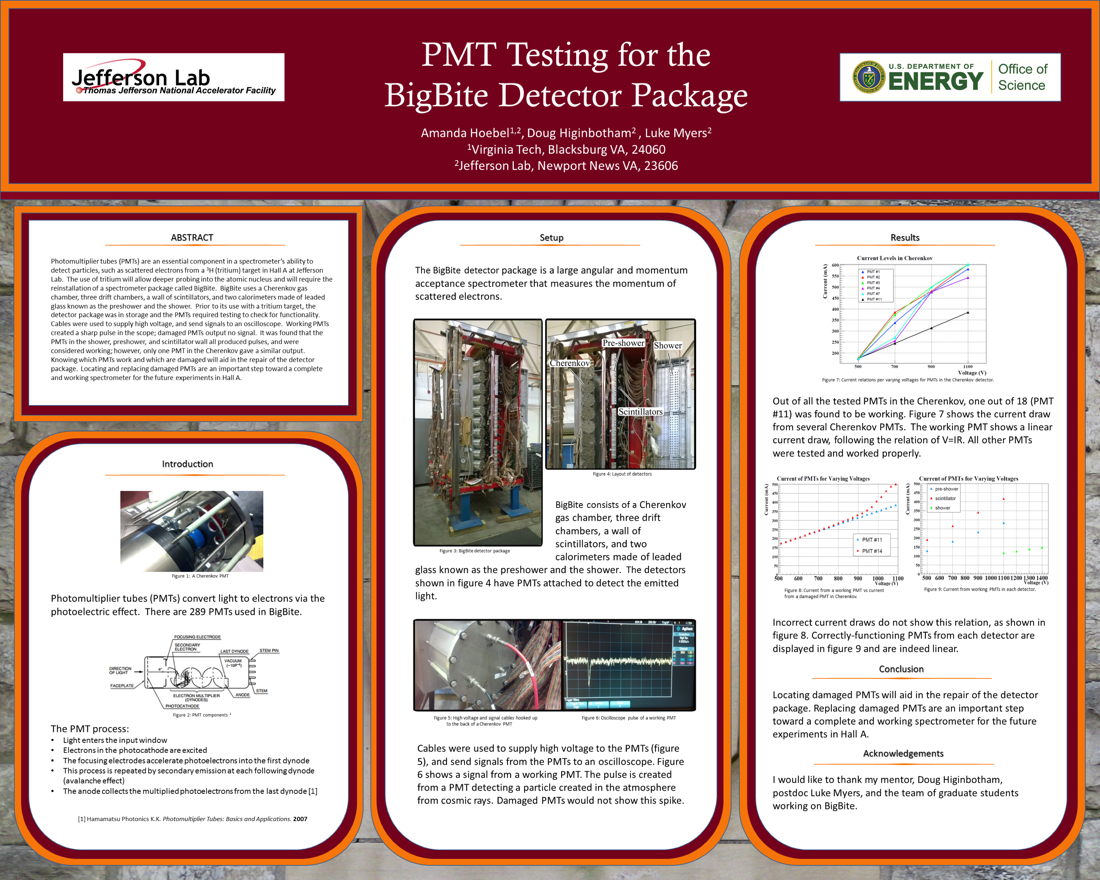Undergraduate Research at Jefferson Lab
PMT Testing for the BigBite Detector Package
Student: Amanda E. Hoebel
School: Virginia Polytechnic Institute and State University
Mentored By: Douglas Higinbotham
Photomultiplier tubes (PMTs) are an essential component in a spectrometer's ability to detect particles, such as scattered electrons from a 3H (tritium) target in Hall A at Jefferson Lab. New 11 GeV electrons from the beam line will probe deeper into the hadron structure of the atomic nucleus. Such probing will require the reinstallation of a spectrometer package called BigBite. BigBite is a large angular and momentum acceptance spectrometer that measures the momentum of electrons that have scattered from protons and neutrons in the target. BigBite uses a Cherenkov gas chamber, three drift chambers, a wall of scintillators, and two calorimeters made of leaded glass known as the preshower and the shower. Prior to its use with a tritium target, the detector package was in storage and ran the risk of becoming damaged. The PMTs required testing to check for functionality. Cables were used to supply high voltage to the PMTs, and send signals from the PMTs to an oscilloscope. These signals were produced from photon excitation of interacting cosmic background rays converted electrically within the PMTs. The detection of an atmospheric particle created a sharp dip on the scope and was considered a working PMT; signals with multiple spikes were noise, and were considered a damaged PMT. It was found that the PMTs in the shower, preshower, and scintillator wall all produced sharp signals, and were considered working; however, only one PMT in the Cherenkov gave a similar output. In total, 18 PMTs (all within the Cherenkov) produced overly-abundant signal noise, or were generally nonresponsive, and were considered damaged. It was not expected to have almost all damaged PMTs in the Cherenkov. Knowing which PMTs work and which are damaged will aid in the repair of the detector package and knowledge of better storage for future equipment. Locating and replacing damaged PMTs are an important step toward a complete and working spectrometer for the future experiments in Hall A.

Citation and linking information
For questions about this page, please contact Education Web Administrator.
